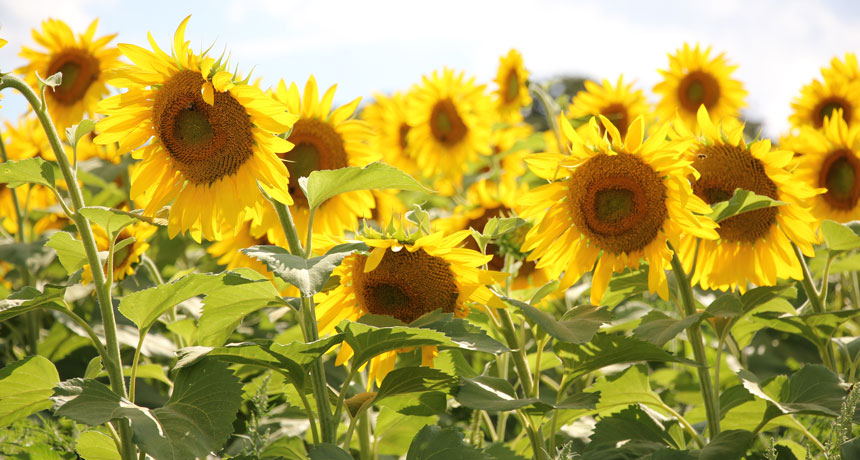Young sunflowers keep time
The flowers track the sun using an internal clock

Mature sunflowers aim their flower heads to the east. That way, the flowers get warmer and attract more pollinators.
L. Hamers
Young sunflowers are sun worshippers. They grow best when they track the sun as it moves from east to west across the sky. But the sun doesn’t provide their only cues on where to turn — and when. An internal clock also guides them. This biological clock is like the one that controls human sleep-wake cycles.
New research shows that depending on the time of day, different sides of a young sunflower’s stem will grow at different rates. Genes that control growth on one side of the stem — the east side — are more active during the morning and afternoon. Growth genes on the opposite side are more active overnight. This helps the plant bend from east to west so that the youngster can track the sun as it moves across the sky. Because the west side’s growth speeds up at night, this will position the plant to face the next day’s rising sun.
“At dawn, they’re already facing east again,” notes Stacey Harmer. She’s a plant biologist at the University of California, Davis. Harmer and her team found that chasing the sun like this allows young sunflowers to grow bigger.
The researchers wanted to better understand what was prompting plants to bend back and forth. So they grew some indoors with a light source that didn’t move. Yet even though the light stayed in place, the flowers moved. They continued to bend to the west during each day, then turned back toward the east each night. Harmer and her colleagues concluded that the stem was responding not just to light, but also to directions from an internal clock.
The researchers report their results in the August 5 Science.
This regular, daily pattern is called a circadian (Ser-KAY-dee-un) rhythm. and it’s similar to the one that controls our own sleep-wake cycles. Such a system can be very useful, Harmer says. It helps young sunflowers run on schedule even if something in their environment changes temporarily. A cloudy morning, or even a solar eclipse, won’t prevent them from tracking the sun.
Once they mature, the plants stop following the sun back and forth across the sky. Their growth slows and eventually stops with the flower’s head perpetually facing east. That offers an advantage, too. Once the sunflowers are old enough to produce pollen, they need to attract bees and other pollinating insects. Harmer and her colleagues found that east-facing flowers get warmed by the morning sun and attract more pollinators than west-facing ones. Just like the planet they live on, sunflowers’ lives revolve around their namesake star.







